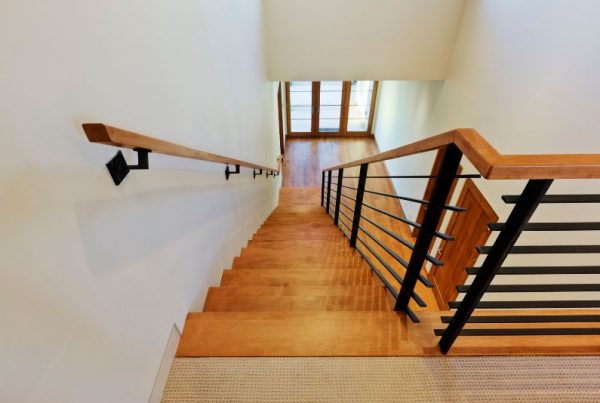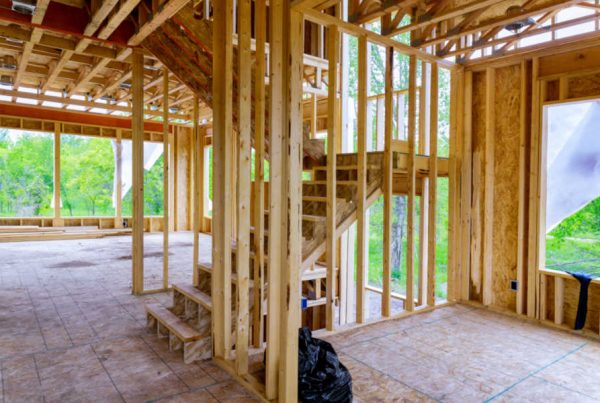After the on-site installation of a home lift is complete, the next phase involves post-installation checks and testing to ensure everything is functioning correctly and safely. In this guide, we’ll outline the steps taken to verify the lift’s performance, the safety features included, and the orientation provided to homeowners after the installation.
Post-Installation Checks and Testing
Once a lift installation is finished, it undergoes full commissioning checks. These checks are conducted using detailed commissioning check sheets that incorporate both manufacturer guidelines and best practices developed by Axis Lifts. For a roped hydraulic lift, this testing process can take about a full day, while for a screw and nut system, the process is generally shorter due to the pre-assembled nature of the lift.
The checks primarily involve verifying the safety components of the lift, including the functionality of safety gear. A full weight test is also performed at 10% above the maximum load capacity to ensure the lift’s ability to handle the expected usage.
- Roped hydraulic lift: Approximately one day of testing.
- Screw and nut system: Less time due to the pre-assembled nature.
- Safety and weight checks: Safety gear is physically tested, and a full weight test is performed.
Ensuring Safe Operation
Safety is a priority during the post-installation phase. The commissioning check sheets are designed to ensure that all safety features are functioning properly. For example, the safety gear on a hydraulic lift is physically engaged during testing to ensure it stops the lift as expected, even with the maximum weight load.
These rigorous tests help to verify that the lift is operating safely and is ready for use, providing peace of mind to homeowners.
- Safety Gear Testing: Safety components are manually tested, including the safety gear on hydraulic systems.
- Maximum Load Test: The lift is tested with the maximum load to ensure safe operation.
Homeowner Training and Orientation
Once the lift has been tested and commissioned, Axis Lifts provides full operational training to the homeowners. This includes an overview of how to use the lift safely and efficiently, as well as emergency evacuation procedures. In the event of an incident, homeowners are also instructed on how to help someone trapped in the lift, including guidance on contacting Axis Lifts for assistance.
- Operational Training: Full training on the use of the lift.
- Emergency Evacuation: Guidance on handling emergency situations, including over-the-phone support.
Common Safety Features in Home Lifts
Modern home lifts are equipped with numerous safety features to protect users. One of the primary safety mechanisms is the electronic locking of landing doors, ensuring that the lift will not operate if any door is ajar. This applies to all types of lifts, whether they have sliding or swing doors. Additionally, safety edges are installed on platform lifts—these edges are designed to stop the lift if they come into contact with an obstruction.
- Electronic Door Locks: Prevents lift operation if doors are not fully closed.
- Safety Edges: Stops the lift if an obstruction is detected.
- Stop Switches: Included on some lifts to halt operation manually.
Emergency Features for Added Safety
Home lifts are designed with emergency features to ensure the safety of users in case of power loss or other issues. Platform lifts are equipped with a battery backup, allowing the lift to return to the ground floor even if power is lost. Hydraulic systems, on the other hand, are fitted with an Uninterruptible Power Supply (UPS) that automatically lowers the lift and opens the doors in case of power failure.
Both types of lifts also feature manual drive buttons or hydraulic release mechanisms to allow for manual lowering in emergency situations.
- Battery Backup: Allows platform lifts to return to the ground floor during power loss.
- UPS for Hydraulic Systems: Automatically lowers the lift and opens doors during a power outage.
- Manual Lowering: Both screw and nut, and hydraulic systems have mechanisms for manual lowering.
Emergency Communication System
All home lifts installed by Axis Lifts include an emergency communication system. For residential lifts, this may involve a handset that allows users to contact a designated person in case of emergency. In commercial installations, lifts are required to have hands-free emergency communication, which is provided via a 4G GSM unit. This ensures that users can contact Axis Lifts’ 24-hour emergency response team if needed.
- Hands-Free Communication: Required in commercial lifts for emergency situations.
- Residential Handset: Allows users to call a designated contact.
- 24-Hour Support: Emergency calls are routed to Axis Lifts’ 24-hour response line.
Take the Next Step with Axis Lifts
Axis Lifts is committed to ensuring that every lift is safe, reliable, and easy to use. From post-installation checks to training homeowners on safe operation, we provide comprehensive support throughout the installation process. If you’re considering a home lift installation, contact us at 1300 002 947 or email us at sales@axislifts.com.au for expert guidance. Stay tuned for the next post in our series What to Expect for a Home Lift Installation as we explore ongoing maintenance and servicing.




